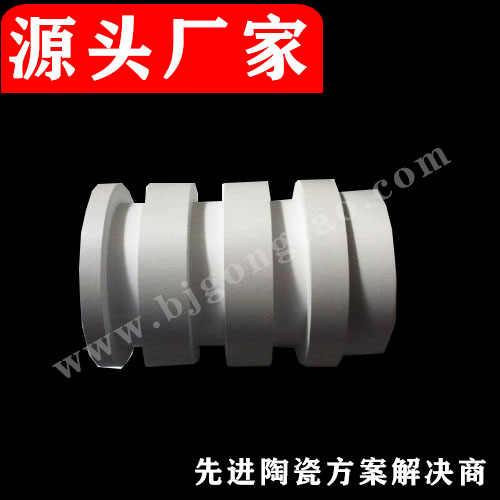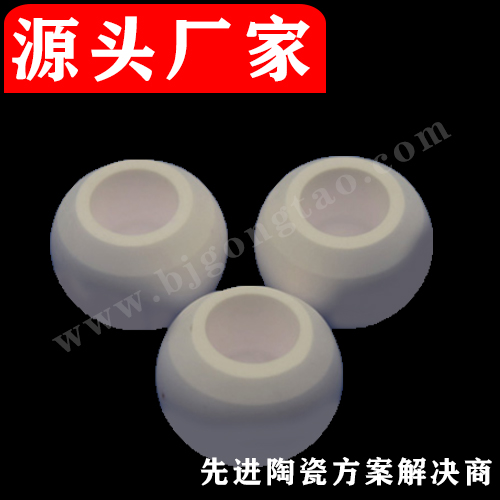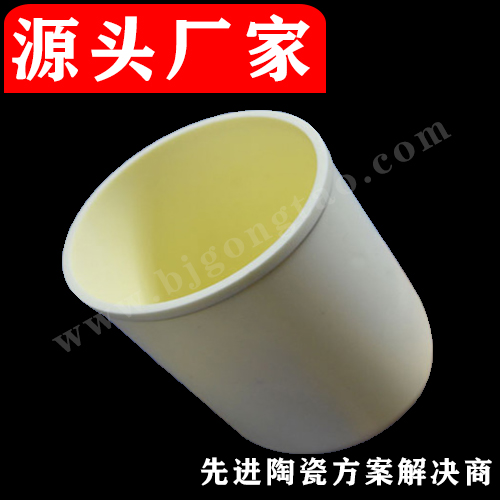
Suzhou Kaifa New Material Technology Co., Ltd.
Email:heqing@szkfxc.com
Email:sales@szbknm.com
Email:bkxc.bonnie@gmail.com
Eighteen martial arts of spherical alumina
Alumina powder is one of the most important powder materials in industrial production, and spherical powder, especially highly dispersed spherical powder, because of its own spherical structure makes it have good fluidity, plus its dispersibility , The larger specific surface area and its own physical and chemical properties make it play a role in more applications. Therefore, with the rapid development of industrialization, the spherical alumina powder will surely get deeper development and wider application.
1. The alumina family
Broadly speaking, alumina can be divided into two categories: hydrated alumina and anhydrous alumina.

Transformation of hydrated alumina to α- Al 2 O 3

The different crystal forms and unique physical and chemical properties of alumina and its hydrates determine that they are widely used in the fields of petrochemicals, electronics, refractory materials, ceramics, abrasives, pharmaceuticals and aerospace. On the other hand, it is the stability of the physicochemical properties of the alumina powder, so it is extremely difficult to improve the performance by directly processing the alumina powder. Therefore, to obtain higher performance alumina powder, it is necessary to start with synthetic preparation technology.
2. Preparation of spherical alumina
Powder spheroidization methods include physical methods and chemical methods.

According to different material aggregation methods, the methods for preparing spherical alumina can be systematically divided into three categories: gas phase method, liquid phase method and solid phase method.
Method for preparing spherical alumina powder

Ball milling
The ball milling method is the most common method for preparing ultrafine alumina powder. Usually, the rotation or vibration of the ball mill is used. The raw material is hit by the abrasive, ball milled and stirred. The large particle size powder is refined into ultrafine powder.

Roadmap of ball milling process for alumina powder
Wei Shuai. Preparation and Characterization of Highly Dispersed Alumina Powder by Chemical Precipitation
The size of the spherical alumina powder particles obtained mainly depends on the particle state of the raw materials and the preparation process.
Advantages: simple operation, low cost and high output.
Disadvantages: The surface of the prepared spherical powder particles is relatively rough, resulting in an increase in specific surface area and increased powder activity, which is prone to agglomeration between particles, and is not suitable for preparing spherical powder particles with high quality requirements.
Homogeneous precipitation
The precipitation process in a homogeneous solution is the formation of crystal nuclei, then aggregation and growth, and finally the process of precipitation from the solution, which is usually non-equilibrium, but if the concentration of the precipitant in the homogeneous solution can be reduced, even slowly Generation, then a large number of tiny crystal nuclei will be uniformly generated, and the resulting fine precipitate particles will be uniformly dispersed in the entire solution, and will maintain a balanced state for a long time. This method of obtaining precipitation is called It is a homogeneous precipitation method. For the homogeneous precipitation method, if the size of the precipitated particles obtained is within the range of colloidal particles, this method is also called the sol-gel method.

Process flow chart of preparation of ultrafine alumina precursor by precipitation method
Chao Bingxuan. Study on the preparation of ultrafine spherical alumina by aqueous precipitation

Process roadmap of preparing alumina powder by homogeneous precipitation method
Xu Xiaojuan.Synthesis and properties of monodisperse spherical Al 2 O 3 and YAG powders
Advantages: Homogeneous precipitation method is relatively mild, high sphericity, average particle size 400nm ~ 10μm, low purity, good dispersion.
Disadvantages: In order to obtain spherical powder, it is usually necessary to use aluminum sulfate as the raw material, so harmful sulfides will be generated during the calcination stage. After sintering, there are reunions and porous channels.
Sol-gel method
The sol-gel method is to use alkoxide or inorganic salt through hydrolysis or polymerization to form a precursor sol, and then alcohol washing, aging and finally calcination to obtain alumina powder, using this method to accurately control the system pH and reactant concentration .
Advantages: good uniformity, high chemical purity and other advantages.
Disadvantages: the preparation process is more complicated and the cost is higher.
Sol-emulsion-gel method
This method was developed on the basis of the sol-gel method. In the early days, the sol-gel method was mostly used to prepare alumina sol, and more was to study the structure of the resulting colloid. Gradually, this method became the preparation of ultrafine powder In order to obtain spherical powder particles, people use the interfacial tension between the oil phase and the water phase to make tiny spherical droplets, so that the formation and gelation of sol particles are limited to tiny droplets. Finally, spherical precipitated particles are obtained.
Morphology of spherical alumina prepared by sol-emulsion-gel method

In the sol-emulsion-gel method, in order to form an emulsion, a large amount of organic solvents and surfactants are used. The separation process of the spherical powder in the emulsion is very cumbersome, and it is not easy to maintain the powder during the drying and calcination stages Spherical.
Dribbling
The dripping ball method is to drop alumina sol into the oil layer (usually paraffin, mineral oil, etc.) to form spherical sol particles by the action of surface tension, then the sol particles are gelled in an ammonia solution, and finally the gel particles A method of drying and calcining to form spherical alumina. This method is a further improvement in the process of the sol-emulsion-gel method, applying the emulsion technology to the aging stage of the sol, and keeping the oil phase immobile, eliminating the need to separate the powder from the oily agent.

Device diagram for continuous preparation of spherical alumina adsorbent
Advantages: This method is usually used to prepare spherical alumina with a larger particle size, and is mainly used in adsorbents or catalyst supports.
Disadvantages: The use of hot oil and the need to keep the sol dripping for a long time are the disadvantages of the drop ball method.
Template method
The template method uses spherical raw materials as reagents to control the morphology in the process. The products are usually hollow or have a core-shell structure. Jin Lu used carbon microspheres enriched with carboxylate to prepare hollow spherical alumina.
The synthesis principle of hollow spherical alumina

Since the performance of the template determines the final appearance of the powder, a template agent that meets strict requirements must be used in the template method.

Spherical alumina synthesis process flow chart
Lu Yimin. Preparation of high hydrothermally stable spherical alumina and its application in catalysis
Li Lei used the template method to synthesize spherical alumina using gum arabic powder, gum arabic powder and P123 mixed reagent as templates.

The role of gum arabic powder in the synthesis of spherical alumina
Li Lei. Study on the preparation of spherical nano-alumina powder using template materials
Aerosol decomposition
Aerosol decomposition usually takes aluminum alkoxide as raw material, utilizes the properties of aluminum alkoxide to be easily hydrolyzed and pyrolyzed at high temperature, and adopts the physical means of phase change to gasify the aluminum alkoxide, then contact with water vapor to hydrolyze and atomize, and then After high-temperature drying or direct high-temperature pyrolysis, the gas-liquid-solid or gas-solid phase transformation is achieved, and finally the spherical alumina powder is formed. The complicated experimental device composed of atomizing part and reaction part is the key of this method.
Device drawing of aerosol decomposition method and SEM of product

Schematic diagram of aerosol hydrolysis

Jet method
The essence of the spherical alumina prepared by the spray method is to realize the phase transition in a short time. The surface tension is used to make the product spherical. According to the characteristics of the phase transition, it can be divided into spray pyrolysis method, spray drying method and spray melting. law.
Plasma spray melting device diagram and product SEM

The aerosol decomposition method and spray method are suitable for producing micron to nanometer spherical alumina powder. Although the reaction equipment is complicated, it is easy to realize industrialization.
Other methods
Spray drying method: The spray drying method is a method for controlling the formation of alumina balls by using a sprayer. Ding Xiangjin of Shanghai Silicate Research Institute uses alumina sol as a binder, mixes α-Al 2 O 3 fine powder, alumina sol, and distilled water in a volume ratio of 1:1.6:1.2, and the slurry is spray dried after ball milling After spraying and granulating, the powder was collected and placed in an oven at 120℃ for 24h, and then calcined at 800-1600℃ for 2h, respectively, to obtain powder at different calcination temperatures.

Flow chart of spray drying method

Spray drying device
Liu Jie. Preparation of Ultrafine Spherical Alumina and Control of Its Particle Size and Crystal Form
Explosive synthesis method: Explosive synthesis method is a method to control the formation of alumina balls by the strong energy released in explosive explosion or discharge explosion.
Zhu Shizhen made use of the gel properties of alginic acid and pseudo-boehmite to prepare two spherical alumina particles with different specifications , which are pure alumina particles with a particle size of 3-5 nm and different particles with a particle size of 1-2 nm. Metal-hybrid spherical alumina particles. Studies have shown that the pure alumina pellets prepared by the combination of alginic acid sol-gel and extrusion molding have a high specific surface area (100~300m 2 /g) and a large pore volume (0.8~1.1cm 3 /g) and pore size (15~33nm).
Alginic acid structural formula

"Eggshell" structure formed by metal ion Mn+ and alginic acid G block

Preparation process of spherical alumina

Preparation process of hybrid spherical alumina particles

Analogy of preparation methods for spherical alumina powder

Summary
Spherical alumina is a fine chemical product in the alumina material family. It has excellent compression molding and sintering characteristics, which can greatly improve the quality of ceramic products; regular morphology can avoid scratches, which is beneficial for polishing and grinding materials; in the petrochemical industry, it is used as a super-fine spherical catalyst directly Alumina powder can reduce wear and increase the service life of the catalyst, thereby reducing production costs. QYResearch predicts that the global spherical alumina market will reach US$94.61 million in 2024. Spherical alumina preparation technology needs to be further strengthened.
Reference materials:
Liu Hongyu et al. Comment on the preparation method of spherical alumina
Liu Jie. Preparation of Ultrafine Spherical Alumina and Control of Its Particle Size and Crystal Form
Zhu Shizhen. Preparation of New Spherical Alumina Particles and Their Performance in Propane Dehydrogenation
Wei Shuai. Preparation and Characterization of Highly Dispersed Alumina Powder by Chemical Precipitation
Chao Bingxuan. Study on the preparation of ultrafine spherical alumina by aqueous precipitation
Xu Xiaojuan.Synthesis and properties of monodisperse spherical Al 2 O 3 and YAG powders
This information is derived from the powder network for academic exchange only





